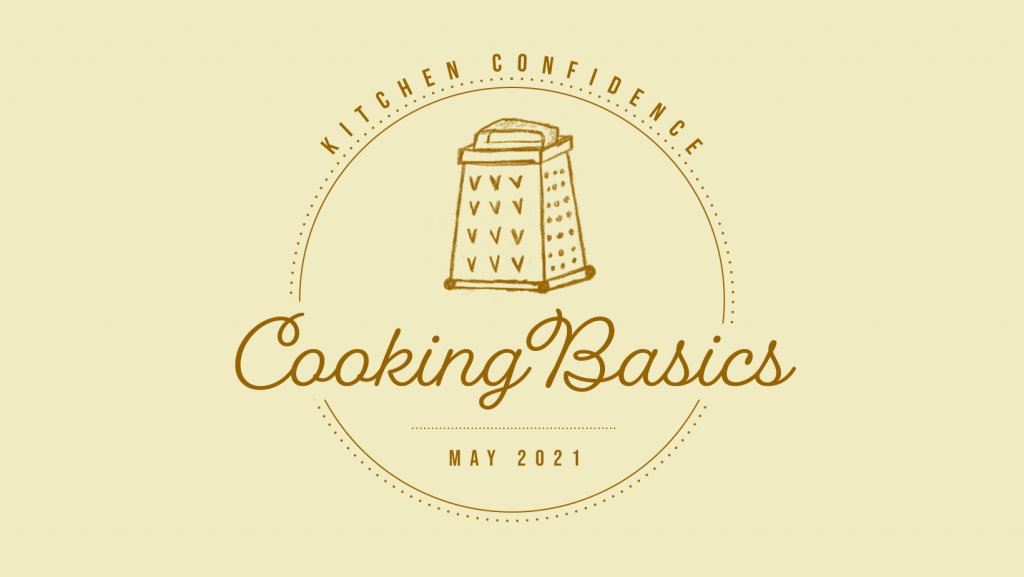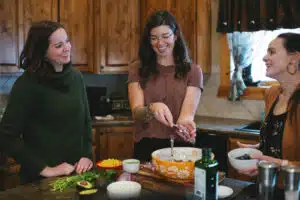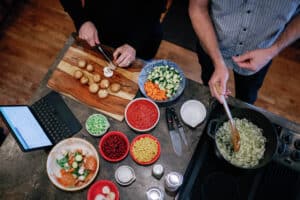If you’re like us, you’ve looked at a new recipe and felt confused by some of the terms used in the recipe. In hopes of saving you time and energy, we have put together a list of cooking terms and their definitions so you don’t get tripped up again. That fancy recipe you have planned for dinner this week will be a breeze to put together!

Cutting:
Dice: to cut into small cubes
Chop: to cut into pieces with quick stroke or repeated strokes
Mince: to cut or chop into very small pieces
Julienne: a preparation or garnish of food that has been cut into thin strips
Cooking:
Dredge: to coat by sprinkling (as with flour)
Deglaze: to dissolve the small particles of sautéed meat remaining in (a pan) by adding a liquid and heating
Roux: a cooked mixture of flour and fat used as a thickening agent in a soup or a sauce
Mirepoix: a sautéed mixture of diced vegetables (such as carrots, celery, and onions), herbs, and sometimes ham or bacon used especially as a basis for soups, stews, and sauces
Raclette: a Swiss dish consisting of cheese melted over a fire and then scraped onto bread or boiled potatoes
Blanch: to scald or parboil in water or steam in order to remove the skin from, whiten, or stop enzymatic action in (such as food for freezing)
Parboil: to boil briefly as a preliminary or incomplete cooking procedure
Bechamel: a rich white sauce
Gadgets:
Sous vide: a method of cooking food slowly in a vacuum-sealed pouch at a low temperature so as to retain most of the juice and aroma
Baking:
Macerate: to cause to become soft or separated into constituent elements by or as if by steeping in fluid
Coulis: a sauce made with pureed vegetable or fruit and often used as a garnish
Extra:
Mise en place: a culinary process in which ingredients are prepared and organized (as in a restaurant kitchen) before cooking
Amuse-Bouche: a small complimentary appetizer offered at some restaurants
Tartare: highly seasoned ground beef eaten raw
*Definitions taken from Miriam- Webster Dictionary
Join us this month for more cooking basics! Whether you’re a novice or a well-seasoned cook, we’re sharing tips and tricks to help everyone gain Kitchen Confidence!






